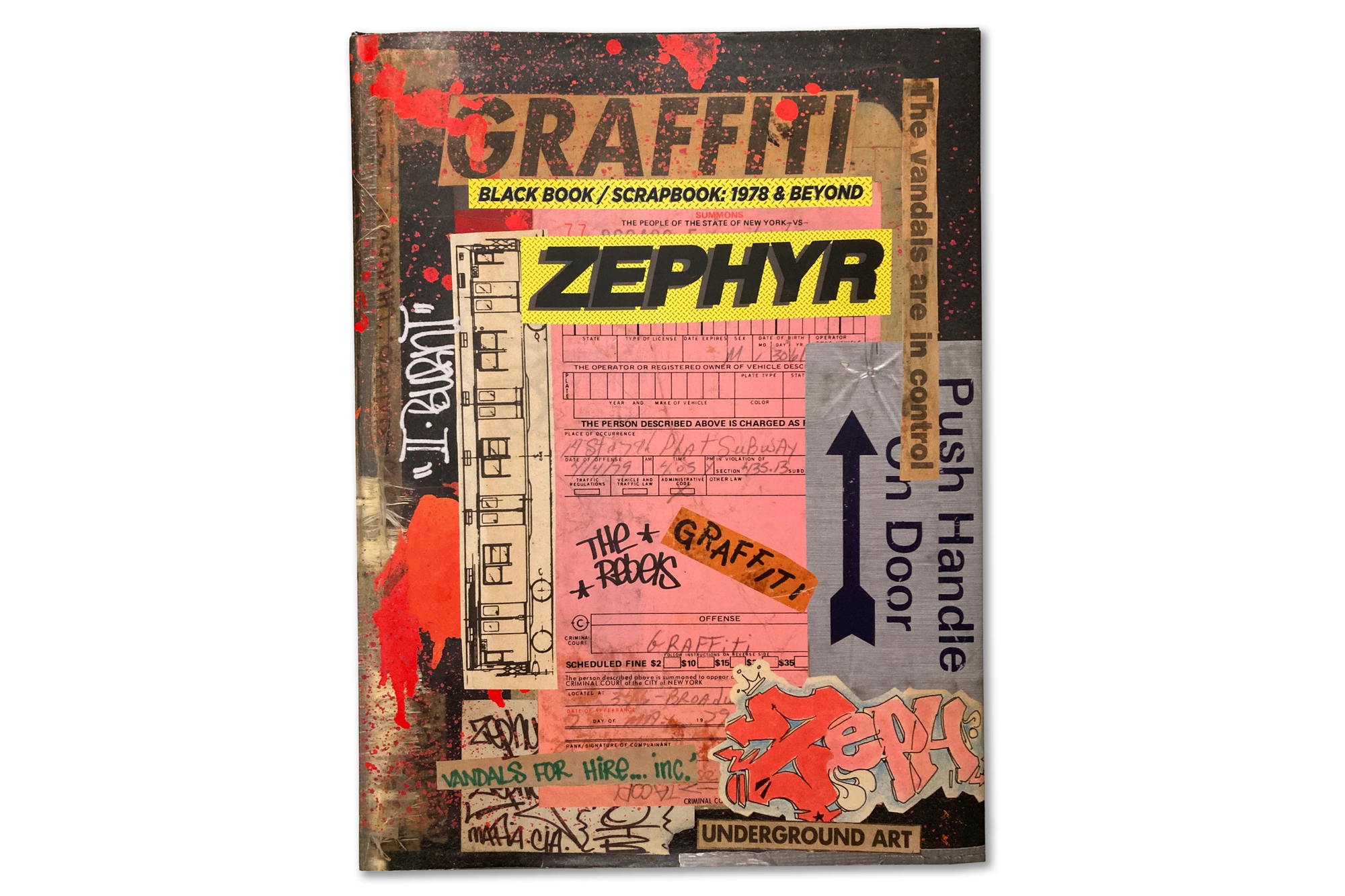During the summer of 1977, Andrew Witten started writing ZEPHYR as a nod of respect to Tony Alva and the Z-Boys who ran the West Coast skate scene. “I had already been doing little toy neighborhood tags for years by that time, with an unfortunate list of questionable names like ‘FRODO’ and ‘TREK’,” says ZEPHYR, who got his start in isolation on New York’s Upper West Side in ’75. All that changed when he began hanging out at a playground behind the Central Park bandshell the following year. “That’s where we formed a graffiti club called the Rolling Thunder Writers,” he says. “It was created by Billy Harmon, known as ‘BIL-ROCK‘. We were not particularly gifted graffitists in any capacity, and we were mostly newbies.” It was just that freshness set them apart. Early RTW members, including REVOLT, EARTH, MACKIE, RASTA, and VANDAL, were distinct in both style and name. Instead of simply following established writers, they looked at psychedelic art that graced the fabled Fillmore posters and Grateful Dead album covers.

“Our pieces did not look like anything that had come before,” ZEPHYR says. Pointing to the CRUNCH piece that appears on the back cover of Subway Art (1984), he continues, “That pretty much sums us up stylistically. He uses every color in the rainbow in a clean graphic approach; his letters are bent and angular, and they actually look like they’re being crunched. In this piece he created an active logo more than attempting to mimic the styles of the era.”
While hanging out in Central Park, ZEPHYR saw black books passed between writers on the regular. “I met two guys at the bandshell early on, SHADOW [Chris Lee] and SI-3 [Peter Benedict]. They were always together back then,” he says. “They both lived in Brooklyn, and we used to go to Peter’s house and hang out. That’s probably when I first started doing ‘black book sessions’, just sitting in Peter’s room for hours working out ideas for theoretical subway pieces. This later became a standard practice for me for years to come.”

For two years in high school, ZEPHYR carried a 5×8 black book everywhere he went. He pulls out the old book, pages through it, and describes a mix of graffiti, “bizarre non-graffiti drawings,” and a few coupons from the back of Chesterfield cigarette packs. “I guess I was that annoying pseudo-Bohemian guy at a party, nestled in a corner drawing in a little sketch book acting awkward and pretentious,” he recalls.
In 1978, he went big and started an 11×14 black book, and found “form follows function” as architect Mies van der Rohe famously observed. “When I started the big book I didn’t have a plan to paste anything in it. In fact, that was probably against my self-imposed rule because I knew that doing so would violate the ‘traditional’ nature of a graffiti black book,” ZEPHYR says. “It’s hard to put myself in the mindset of my 17-year-old self but I think gluing things into it was a matter of necessity. I was a teenage runaway, and my life was a scattered mess at the time, appropriately similar to the vibe of the book. The articles and things that I wanted to keep needed a home and so they ended up there.”

As the years progressed, the pages became a multilayered history of the era as seen at the center of the storm, with an eye towards preserving the exquisite chaos of perhaps the most ephemeral art form the world has ever known. Amidst the newspaper clippings, magazine covers, party flyers, faded photographs, gallery invitations, matchbook covers, court summons, and ticket stubs are contributions from the RTW crew, FUTURA, FREEDOM, and CLIFF 159.
Nearly half a century in the making, ZEPHYR: Graffiti Black Book/Scrapbook: 1978 & Beyond (Beyond the Streets) revisits this glorious era with a facsimile edition that includes page by page commentary that brings it all into focus. A natural born writer in every sense of the word, ZEPHYR weaves fact, myth, and lore, into a hypnotic pastiche. With the passage of time, the book takes on the glimmering patina of artifact that comes from surviving the relentless purging of the past.

What remains is an authenticity that evokes the spirit of old New York, a distinctive blend of legendary status and down to earth reality check. “I wish I could tell you that there was a lot of thought that went into what I was doing with the book, but I’d be lying. Once I started the book it became a convenient repository for printed matter,” ZEPHYR says. But as it turns out, being in the moment is more than enough, especially if you’re following a calling that readily upends the status quo.
As graffiti moved off the trains and into the galleries during the early ‘80s, the mainstream struggled to keep pace, huffing and puffing like they just ran up two flights of stairs and still missed there train. “That was a weird moment because suddenly there were so many articles in local papers and mags that were telling two opposite narratives simultaneously,” ZEPHYR remembers. “On one hand, the graffiti writers were a bunch of evil little rats that needed to be wiped out, but on the other hand the same people are exhibiting their canvases in galleries and some of them might be artistic geniuses.”
Because history was on the side of New York youth once again.





Follow Miss Rosen on Twitter



